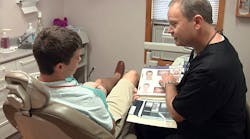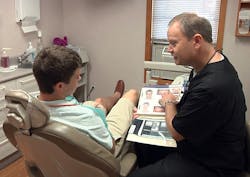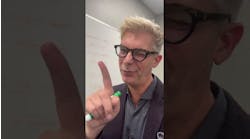January 9, 2013
Before Ramos Dental Center implemented a digital radiography system, they were using the traditional film radiography processor. After every patient X-ray, the assistant, hygienist, or dentist would have to go to the darkroom, where their processor was stored, and wait up to eight minutes for the image to be developed. Once developed, they would take it back to the patient and explain the diagnosis and treatment plan. This didn’t always go well, however, as patients had a hard time seeing what the dentist saw. Many times, the practice lost opportunities at case acceptance not because further procedures were unnecessary, but because the patient didn’t understand quite how necessary they were.
Now that it has gone digital, however, Ramos Dental Center doesn’t have that problem. “It’s easier for us to show [our patients] things that we find, because we can make the image bigger and put the screen right in front of them,” explained Janie, the hygienist at Ramos Dental Center. This, she says, has greatly increased case acceptance. Allie, the dental assistant, agrees. “Patients like the fact that they can see what’s going on. Sometimes dental terms are like a foreign language to them, so easy-to-understand images help the patients understand.”
Air Techniques presents new digital products at the ADA
Pride Institute 2012 Best of Class winners
When Dr. Joe Ramos decided to switch from film to digital radiography nearly six months ago, he had two choices: he could use digital sensors, which can be somewhat bulky and cause intolerable discomfort for some patients, or he could use digital phosphorous storage plates (PSP), which come in the same sizes as film but develop in well under half the time. “Sensors can break, and that can be up to $8,000,” he told me. “The PSPs are about $30 and you can use them up to about 1,000 times.” Since switching to digital six months ago, Dr. Ramos has yet to replace the plates.
Dr. Ramos considered several digital imaging systems before deciding on ScanX by Air Techniques.
The choice to switch was easy, Dr. Ramos told me. There wasn’t a difficult aspect of the transition, but there was definitely a “buggy” stage. “It didn’t take us long to learn it,” Janie told me. “We had a morning of training, and then we started using it that afternoon.” And when there was an issue, they found a way to work it out. Allie explained how: “Every week, it got easier. We had each other to relate to and get through it with.” Dr. Ramos chose to use Patterson’s software with it, since he’s worked with them for the past 26 years. “Patterson had a support group that we could call.” Often, Allie said, they would troubleshoot issues by having a Patterson representative screen share their computer and fix the issue.
Dr. Ramos knew digital was easier than film before he switched. “There is less radiation, fewer chemicals, and less mess. Being able to transmit images via email to other dentists or specialists is a big deal nowadays.” It’s also better for patients, he said, who might lose a copy of their X-ray. “We can always print the original X-ray anytime.” But basically, Dr. Ramos said, “Digital radiography is the way of the future.”
In addition to being easier for patients to understand and for dentists to share information with other dentists, using digital systems means less work for everyone involved (no maintenance of the processor, no spending nearly 10 minutes waiting for film, no worrying about chemicals and how to dispose of them), but more space (no more dark room) and a more cost-effective system. “We don’t worry about having to maintain the X-ray processor or get parts for it, and we don’t have to pay for a technician to work on it once or twice a year like we used to.”
Overall, the digital plate system is a hit at Ramos Dental Practice.
“The PSPs are very similar to the film as far as how they fit in the patient’s mouth, so that didn’t change, but you can view the images much more quickly and clearly,” Janie told me. “It’s definitely worth it. I would recommend it to anybody.”
The dentist agrees. “It’s a much cleaner operation, it’s less than half the time of standard film, the patient can see, I can see – it’s great!”
To see the 6-minute video by Air Techniques on the switch from film to digital, go to our communitysite.








